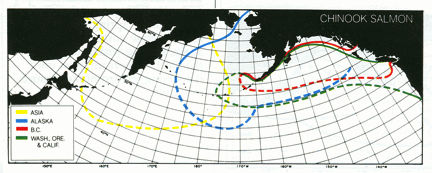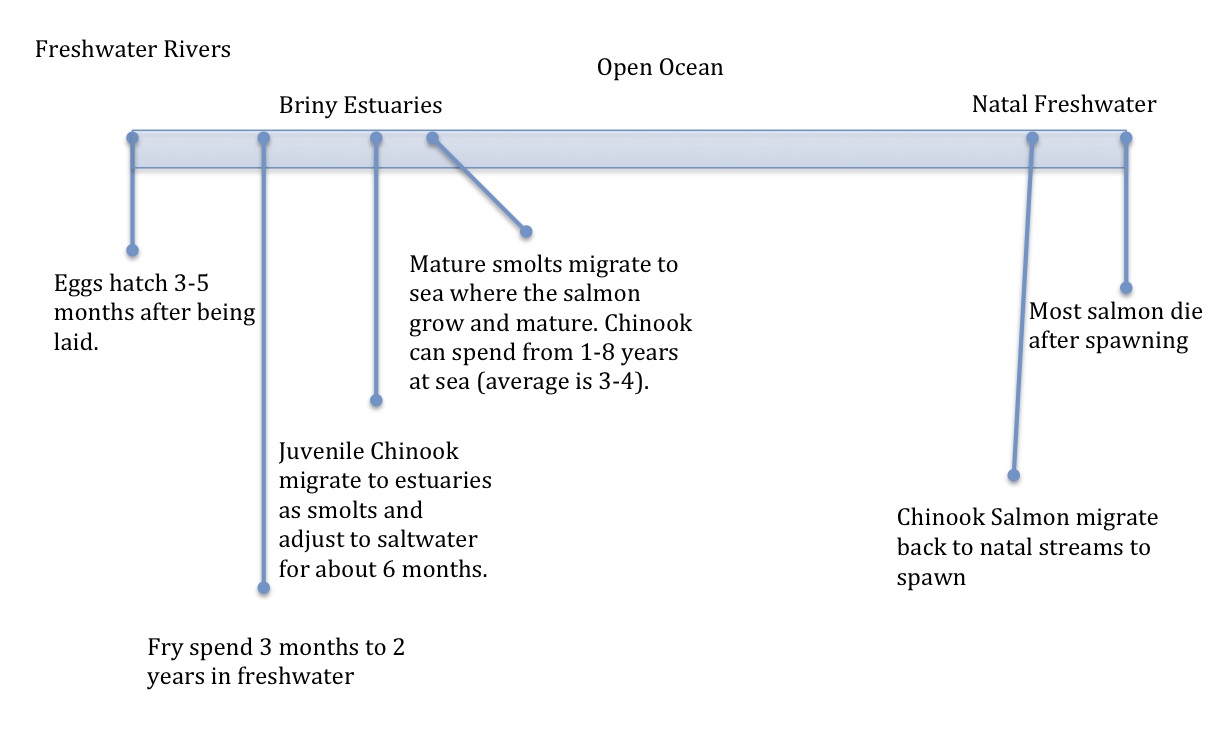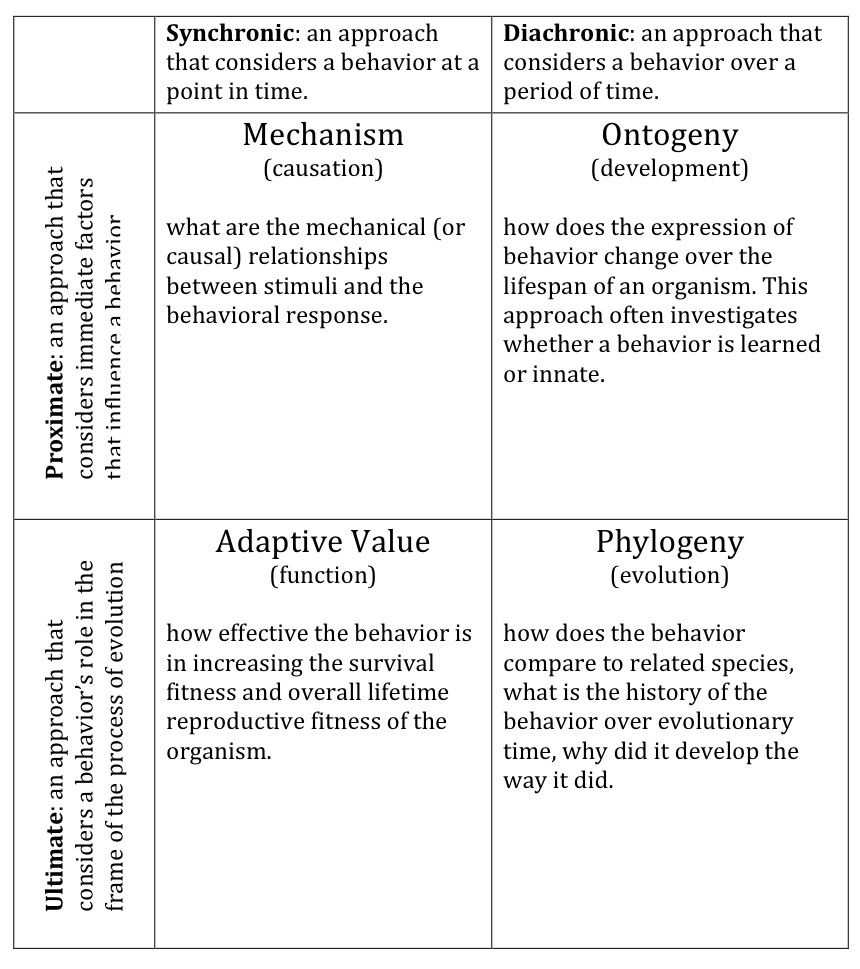MIGRATORY PATTERNS OF CHINOOK SALMON
Biology 342 Fall 2012
Tess Tumarkin & Erin McAllester
About Chinook Salmon, Migration, and Tinbergen
Salmon Migration
Over the span of their lives, Chinook Salmon can travel thousands of miles in the process of leaving and returning to the streams in which they were born.

What is Migration?
The movement of individuals of a population (or an entire population) over a space, usually periodically or seasonally, and oftentimes moving to more suitable climates or following food or resources.
Chinook Salmon Fast Facts
Genus & Species: Oncorhynchus tshawytscha
Can be from 40 to 120 pounds and 3 feet long
Largest of the Salmon
Other names: King, Tyee, Columbia River, Black, Chub, Hook Bill, Winter and Blackmouth Salmon
Migration in Chinook Salmon, outlined in a lifecycle timeline below

Click on these words to see images of salmon eggs, fry, smolts, mature salmon, and migration
The Four Questions
Niko Tinbergen, founder of the elemental four questions for assesing animal behavior, describes methodology for approaching the scientific assesment of behavior in his paper “On aims and Methods of Ethology.” Ethology, defined by Tinbergen as “the biological study of behavior,” is a combined interrogative assessment of behavior (“observable phenomenon,” or movement (411)) and the application of scientific method to further probe hypotheses derived from these observations. While contemporary science advances in method far beyond those methods mentioned in Tinbergen’s text, methodology still falls within the broad context ethology embraces and considers the “science of behavior.” Tinbergen lays out four subcategories useful for dividing, overlapping and specifying behaviors, and asks one important question: Why do these animals behave as they do?
We will consider the migration of Chinook Salmon using Nikolaas Tinbergen's Four Questions for animal behaviors, explicated in the table below (generated by the creators of the website)
